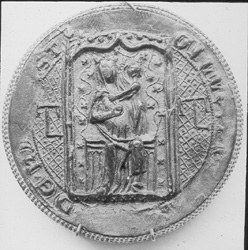 |
 |
 |
 |
 |
 |
 |
|
Kirkstall Abbey: history The history of Kirkstall Abbey, Yorkshire, begins with its foundation in 1147, when a group of twelve monks from Fountains Abbey, under the guidance of their prior, Alexander, colonised the site at Barnoldswick. In 1152 the community relocated to the present site of Kirkstall, and remained here until the dissolution of the abbey in 1539. The abbey buildings escaped the wholesale destruction and plunder that occurred elsewhere; most were left standing and used for agricultural purposes; this is perhaps why Kirkstall is now the most complete set of Cistercian ruins in Britain. While the abbey is now embedded in the industrial quarter of Leeds and the site bisected by the A65 Kirkstall Road, during the Middle Ages - and up until the late eighteenth century - this was a secluded spot in a rural setting. In the late eighteenth and early nineteenth centuries the main thoroughfare to Leeds actually ran through the nave of the church. Kirkstall was founded by Henry de Lacy, baron of Pontefract, who was one of the leading landholders in the North. The abbey’s coat of arms, however, is actually based on those of the Peitivin family, who gave the monks the site at Kirkstall. Like most other Cistercian abbeys in England, the twelfth century was for Kirkstall a time of growth and expansion, when the community developed the abbey precinct and acquired lands and holdings. From the thirteenth century patronage waned and the history of the abbey was marked by highs and lows. The Kirkstall monks, like their Cistercian contemporaries, were embroiled in legal wrangling over their own lands and rights, they were caught up in business relating to the state and the Order, and were affected by social and economic problems that swept the country such as the Black Death, wars and taxation. Nevertheless, the monks made a significant contribution in the areas of trade, industry and technological innovation.
Extensive archaeological work has been undertaken at the Kirkstall site and much is now known about the buildings here and the life of the community during the Middle Ages. This knowledge is complemented by the survival of a number of documentary sources, including charters and a chronicle of the house, as well as an array of artefacts such as seals, pottery and metalwork. |

